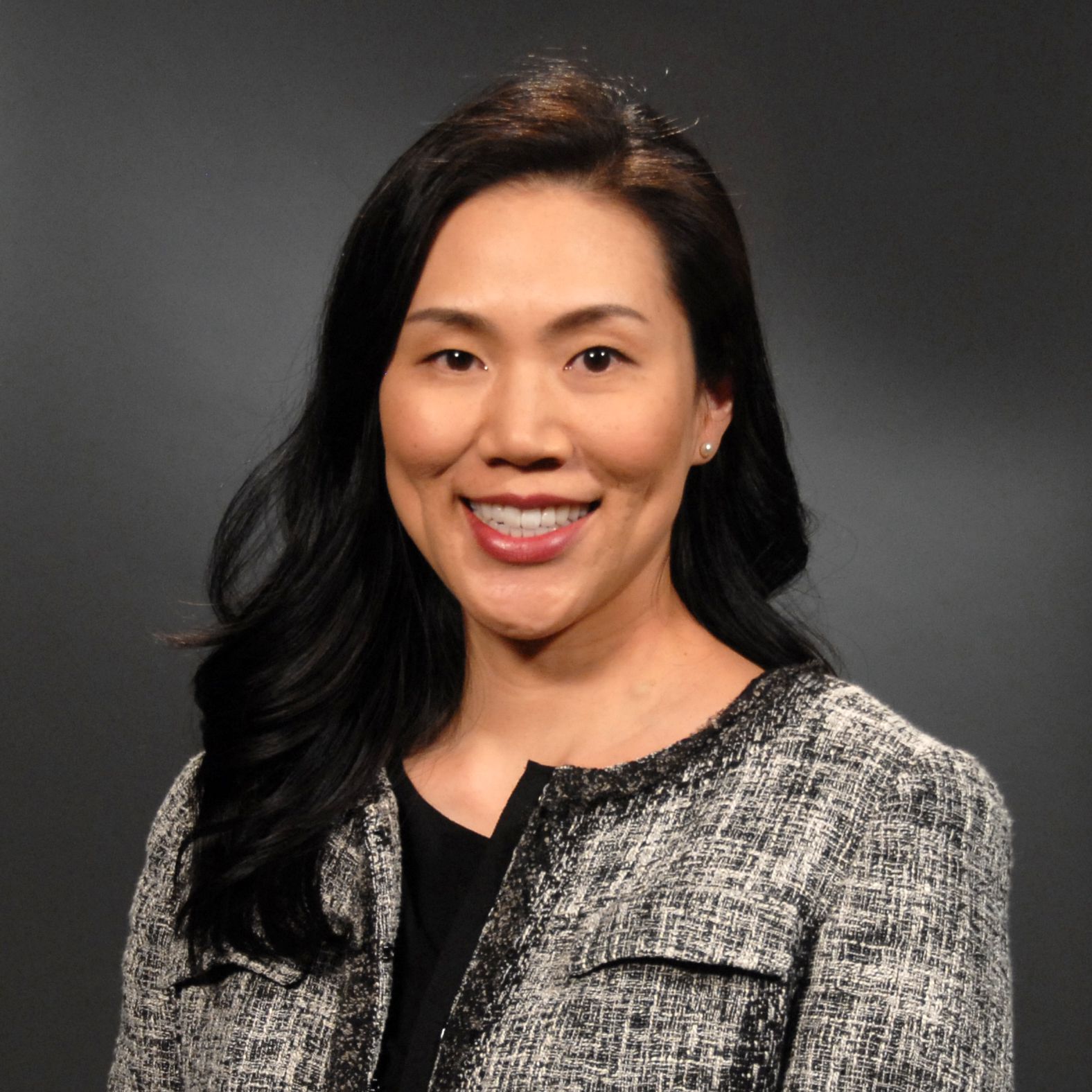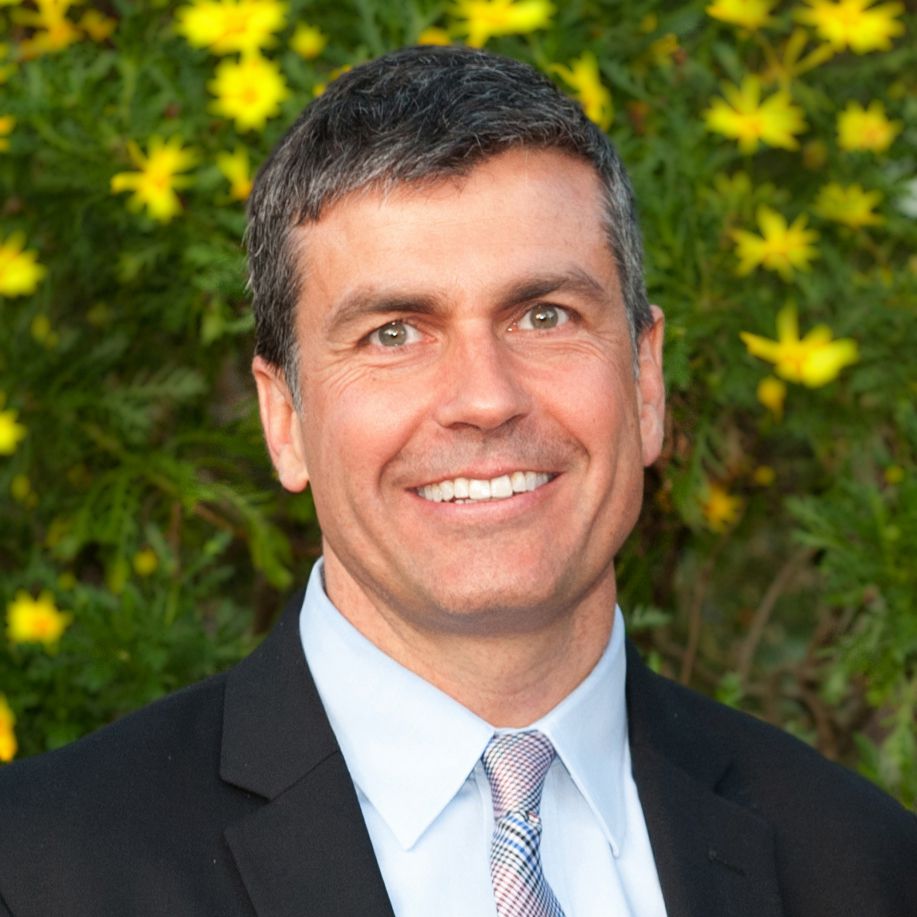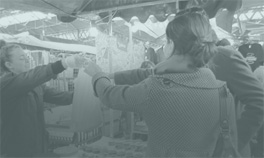Toward a New Business Model: Strengthening Families Helps to Strengthen Communities and the Nation
Written by Laura Choi, Federal Reserve Bank of San Francisco1; David Erickson, Federal Reserve Bank of San Francisco1The fight against poverty and hunger must be fought constantly and on many fronts, especially in its causes.
— Pope Francis, in an address to a joint meeting of Congress September 24, 2015
We are often asked a “resource allocation” question on the best way to serve low-income people and communities given limited money. Which is the most important intervention? Education? Health? Jobs? Public Safety? Asset building? Yet all of these answers are wrong because the question is wrong. As the quote by Pope Francis and so many of the essays in this book make clear, a thriving community or family needs all of these things.
Perhaps a single solution is appealing because it reflects what we think we are capable of doing individually. Like the proverbial drunkard’s search, in which a man looks for his lost keys under the lamppost rather than where he actually dropped them, “because that’s where the light is,” we tend to seek a solution wherever our own light happens to be shining. Yet we know that complex problems require more. To be most effective, we must continue to leverage our respective expertise, but also proactively work with others to find and connect solutions that exist outside of our own field of vision. We also need to better coordinate and share our collective perspectives, competencies, and strategies. That is a tall order, but not an impossible one. To do otherwise wastes time, energy, money, and patience.
What we have learned through the process of bringing this book to fruition is that financial health and well-being are preconditions for nearly all the long-term outcomes that collectively allow people and places to thrive, which is, after all, the goal of community development (for a deeper dive into the concepts of financial health and well-being, see the essays by Andrea Levere and Leigh Tivol, and Jennifer Tescher and Rachel Schneider). Financial health and well-being underpin educational attainment (as described by Regina Stanback Stroud, Martha Kanter, and Sarah Bloom Raskin), good health (see the essays by Jason Purnell and Rita Landgraf), stable employment (see essays by Michael Rubinger, Regis Mulot, and Janie Barrera), and community vitality (see essays by Angela Glover Blackwell and Paul Weech). Yet, despite its significance for the success of so many community development interventions, the concept of household financial well-being is not widely adopted or even understood within the traditional community development field, let alone the many other fields that we hope will embrace it. This book is thus a clarion call for better integration at two levels. First, the asset development and community development fields must become more seamlessly integrated, enabling financial capability strategies to be incorporated into community development activities, such as affordable housing, small business, and workforce development. Second, the community and asset development field as a whole must better integrate with complementary sectors that serve the same population, such as public health, education, and public safety. We propose that financial well-being provides a useful starting point for integration at both levels.
The Future of Community and Asset Development
This book, along with its predecessors, Investing in What Works for America’s Communities and What Counts: Harnessing Data for America’s Communities, examines the lessons of the community and asset development fields and lifts up the innovations. Together, these books and the collective voices they represent are building a unified narrative, asserting that the future of community and asset development must:
- Adopt a “complex adaptive systems” approach: Communities are complex, as are the underlying factors that contribute to financial insecurity. In a community, everything is connected to everything else and interacts in ways that we cannot predict or control. According to Ronald Heifetz of Harvard’s Kennedy School, two types of problems confront leaders: technical problems and adaptive challenges. With technical problems, the problem is often clear and there is a known expert who can provide a solution with some certainty of success. Putting a person on the moon is hard, but we know the parameters of the millions of calculations that are necessary to make it happen, and we have evidence of success, which can be replicated. Adaptive challenges like poverty, on the other hand, present problems that are often not well understood and require innovation, learning, and evolving strategies. No single expert holds a solution; rather, multiple stakeholders must be part of the discovery process, and change must occur in numerous places and across organizational boundaries. The community and asset development field must see its work as part of a larger, complex adaptive system; we are one of many fields seeking to make social change for the benefit of low-income people and places.
- Integrate across sectors: In many ways, we have treated financial insecurity as a technical problem and have responded by creating a set of technical solutions, such as financial education classes or newly accessible financial services. Both of these are important interventions, yet as Levere and Tivol point out in their essay, these solutions did not fundamentally change the economic prospects of low-income individuals at scale, in part because the solutions did not meet people’s complex financial needs. But we are evolving toward a more integrated approach that matches the problem’s complexity. Strategies to build financial capability are now being integrated across multiple levels of state and local government (see essays by Landgraf, Reggie Bicha and Keri Batchelder, and Greg Fischer), nonprofits (see essays by Rubinger, Weech, and José Quiñonez), and the private sector (see essays by Mulot and Asheesh Advani). The work is also cutting across disciplines, recognizing the influence of financial well-being on multiple issues such as housing, health, education, and employment. The interrelated nature of these outcomes demands the integration of strategy—isolated strategies have limited reach at best.
- Strategies must address both people and place: For decades, community developers wrestled with the question of whether interventions should focus on people or place, and we now understand that this is a false distinction. The essay by Ray Boshara and those in Section 3 vividly demonstrate that personal characteristics and experiences, such as race, year of birth, or parental education, are critical drivers of financial opportunity. Yet, people are a product of their place, just as the place is a product of its people—it is impossible to untangle the two. As former Federal Reserve Governor Elizabeth Duke once said, “The debate is over and both sides won.”2 Margery Austin Turner of the Urban Institute argues for a “place-conscious” approach that “addresses the interconnections between family assets and challenges, conditions in the places [families] live, and access to opportunities in the larger city or region.”3 The field must continue to move toward an ecosystem approach that recognizes individual behaviors and their motivations within the context of place. We must help people learn to make good financial decisions, but we must also work on improving the conditions that enable them to make good choices, which is not just about financial services, but also employment, housing, transit, as well as the basic physical conditions that contribute to public safety and good health. For too long, asset building and financial capability has been squarely considered a people-based strategy; the essays in this volume by Glover Blackwell, Weech, Purnell, Rick Lazio, and others demonstrate that financial well-being is inherently about both people and place.
- Be guided by data: Perhaps one of the most exciting breakthroughs highlighted in this book is the evolving conceptualization of financial health and well-being as a definable, measurable outcome that ties to many other important outcomes. As Tescher and Schneider articulate in their essay, “A common goal and a new framework for improving household financial outcomes—one that is broad enough to transcend fields and industries—will enable the complicated universe of government, the private sector, and the nonprofit community to work in greater concert, and therefore, to achieve greater impact. We believe success should be defined as greater consumer financial health and well-being.” Much work remains to develop consensus around the specific set of metrics by which to measure financial health and well-being, but setting and defining a goal is a critical first step. It allows us to begin to align efforts in joint action across sectors. This more comprehensive and holistic understanding of financial well-being is both objective and subjective and relies on compiling data from multiple sources to track multiple trends, including data from individuals themselves. New data from sources such as the Federal Reserve Survey of Household Economic Decisionmaking, the JPMorgan Chase Institute, CFSI’s Consumer Health study, and the U.S. Financial Diaries enable us to better understand how people actually conduct their finances, while CFED’s measure of liquid asset poverty demonstrates the widespread nature of financial insecurity. In addition, the integration of financial data into other data sets such as health and criminal justice provides a better understanding of the relationships between these outcomes and financial well-being. The community and asset development field should stay engaged in the discussion as we collectively build our understanding of financial well-being metrics and data for action. We also must do a better job of using the data to tell the compelling story that household financial well-being fundamentally matters for the success of almost all social innovation outcomes. Finally, we need the data to show the people we serve that they are making progress toward their goals.
- Develop new funding strategies: We believe that any efforts to end poverty using the strategies we have outlined require a fundamental shift in how we finance social policy and practice. Community and asset developers must continue to seek innovations that result in the development of flexible financing that can cross organizational and sectoral boundaries and enable integrated approaches. We must also figure out how to capture the value and return on investment of improved financial well-being and its contribution to longer-term outcomes such as better health, less involvement in the criminal justice system, and increased educational attainment, as the essays by Purnell, Stroud, and Vivian Nixon and Susan Sturm make clear. In addition to working toward more flexible use of funding streams, outcomes-based funding holds the promise of better aligning expenditures and outcomes. Recently, some funders have begun withholding funding until after desired outcomes are produced, protecting themselves from program failure risk and encouraging program adaptation to keep pace with changing circumstances on the ground. “Pay for Success” contracts (alternatively known as Social Impact Bonds) are linking evidence-based nonprofits with government end payers and investors in a unique outcomes-based public-private partnership model. Other forms of outcomes-based financing include prize-based philanthropy and expanded pay-for-performance approaches in Medicare through the Affordable Care Act. Early efforts suggest that meaningful outcomes-based payment strategies are within reach. Although conceptually straightforward, a sector-wide shift toward outcomes-based payments will require, at a minimum: 1) government procurement reform; 2) robust program evaluation capacity; and 3) a financing solution to supply nonprofits with the working capital they need until they can be paid for improving outcomes.
The Difficulty of Operationalizing This Approach
This vision for the future of community and asset development is necessarily ambitious but incredibly difficult to operationalize. A number of efforts that reflect these principles are blossoming across the country, such as Partners in Progress, Promise Neighborhoods, Purpose Built Communities, The Integration Initiative, and the Working Cities Challenge. Although most of these efforts do not view their work through the lens of financial well-being, they represent the types of integrated, cross-sectoral, and data-driven initiatives we envision for the future. Many of the practitioners engaged in this type of work have been forthcoming about the many challenges they face in operationalizing such complex approaches. Some of the most obstinate barriers include the difficulty of coordinating data systems and aligning metrics, as well as the existence of rigid funding silos, which makes it difficult to pay for integrated approaches. Both of these challenges are compounded by the difficulty of connecting near-term interventions with desired long-term outcomes. For example, there has been great interest in aligning the work of community development and public health to address the social determinants of health (see Purnell’s essay), but it has been difficult to connect the impact of a short-term project, such as an affordable housing development, with the trajectory of population health, which unfolds over decades. Therefore, although the concept of integration makes intuitive sense over the long term, practitioners are struggling to figure out what the near-term steps should be.
Financial Well-Being as a Way Station for Multiple Outcomes
We believe that this daunting approach can be made more manageable by breaking it down into its component parts. That is the breakthrough we see in this book. No matter what your long-term goal may be, whether it is boosting high school graduation rates, improving health, promoting more viable families, or developing better workers for twenty-first century jobs, it requires families and communities to reach some threshold of financial well-being.
This makes household financial well-being an important intermediate step and useful organizing principle that allows different sectors to begin aligning their work. By starting to collectively recognize that financial well-being is often at the root of the myriad challenges other sectors work to solve over the long term, we can begin unifying around a common understanding of the next step forward. The beauty of household financial well-being as a conceptual framework is that it is both a stop on the road and a predictor of future success for so many other important outcomes. Put differently, the road that gets to those important outcomes runs through a way station of household financial well-being.
Starting with integration at the level of household financial well-being also has the advantage of allowing us to experiment with new business models, to learn how to act in concert with others, to measure our progress in a meaningful way, and, finally, to find ways to finance these efforts that solve the “wrong pocket problem,” where the investors in one sector create value for another. As Eric Ries argues in The Lean Startup, innovation requires the ability to rapidly create prototypes and test and learn in real-time. This, too, is one of the benefits of the financial well-being framework, in that the field can rapidly test new approaches, such as innovations in financial coaching or integrated services, and hope to see near-term results in factors that influence financial well-being, such as credit scores or emergency savings.
We understand that social change takes time, yet we often lose hope when promising programs fail to deliver on their results. If you want to see dramatic improvements in the life chances of low-income people, you must be committed for the long haul. In some instances, it may take more than one generation to make a positive and permanent change. In a world of collective action and an understanding of poverty as a complex adaptive system, it can be overwhelming to know where to start. But household financial well-being is no doubt a starting point and building block for other goals.
Toward a New Business Model
Focusing on household financial well-being can help us break out of our silos—asset development, community development, health, education, public safety—and reach across sectors to achieve a common goal. We know we have to shift from outputs—the number of bank accounts opened or Head Start slots filled—and focus on outcomes—the numbers of lives improved. Breakthroughs in what is often referred to as “design thinking” are helping us think more holistically about the needs of the family, not our individual programs or products. As the former director of the Domestic Policy Council Melody Barnes said at our first Healthy Communities meeting in 2010, you do not wake up and have a “jobs” day, and the next day is a “transportation” day, and the next an “education” day; every day is an “everything” day. And learning how to provide the interventions a family needs, when they need it, to get on their feet and generate the hope for a better future, as Brandee McHale reminds us in her essay, is the outcome we want.
And of course, as we are successful in one stage of intervention, we must evolve and adapt to deploy new types of interventions in later stages. Once a family undergoes successful credit repair and builds sufficient liquid assets to weather financial unpredictability, it might be time to think about saving for a down payment on a house and developing their children’s future-orientation by building college savings (as discussed in essays by Robert Friedman, Martha Kanter, and others in this book). Similarly, the neighborhood on the rebound may no longer need intense community policing, new bus lines, and a school turnaround, but as conditions improve, it must be on guard for new problems such as gentrification and displacement. This requires new partners, new tools, and new approaches.
Conclusion
These insights are teaching us how to tackle the next frontier of community and asset development—cross-sector, place-conscious, data-driven and coordinated interventions to empower families and communities to restore hope and a chance at a better future. One way to think about this evolution is to compare it to developments in economic history. There is no doubt that after the invention of agriculture, the Industrial Revolution is the most consequential change in human development. But it was many years before those who were undergoing it even realized it was happening; the term “industrial revolution” was not coined until 150 years after the invention of the steam engine.4 That is an important lesson in itself—revolutions are hard to see when you are in the middle of them.
But in fact, there were two industrial revolutions. The first took place around 1740-1780 and primarily focused on textiles. It was relatively small in scale and almost every aspect of it required building new ways of doing things, or new systems. For example, the first factory in the United States was built by Samuel Slater in Pawtucket, Rhode Island. It used the power generated from a water wheel to produce cloth and clothing. But it was unclear how the labor would be organized, there was no way to raise money by selling stock, and there were few legal examples for how to organize the firm or protect workers. All of these processes had to be invented, along with new ways to ship raw materials and finished products, market and sell products, insure the process from calamity, and the like.
The Second Industrial Revolution took place in the late nineteenth century and reorganized economic life on a massive scale. It was dominated by steel, ship building, locomotives, chemicals, pharmaceuticals, consumer goods, and later automobiles. The scale dwarfed the First Industrial Revolution, but the structure followed the early model closely. In other words, the financial, legal, and organizational systems that were developed for textiles provided the framework for the massive expansion of a new way of managing resources and the economy. The result was the most substantial gain in the standard of living the world had ever seen.
We want to build an “anti-poverty industry” that matches the scale and reach of the Second Industrial Revolution. But to get there, we need a First Industrial Revolution to establish the framework. Achieving widespread household financial well-being might be just that.
What is the way forward then? Begin by asking yourself whether a financially healthy client will be more likely to achieve the primary goals you’re interested in. Then flip the question: what can I do to improve the financial well-being of the people I serve in order to achieve better outcomes in the things I care about? Who else is serving the same population, and how does financial well-being cut across our work? These are the foundations of finding meaningful partners—articulating and building shared interests—it is what allows cross-sector work to take shape. The challenge then is for communities to start this intentional linking and raise up champions of financial well-being from different sectors, such as leaders in philanthropy, health, education, and the public and private sectors. In the near term, we hope to see more efforts that build on the cutting-edge practice of complex initiatives, like Partners in Progress or Promise Neighborhoods, bringing together cross-sector leaders to build the financial health of a place and share lessons along the way.
In their book Built to Last, Jim Collins and Jerry Porras introduced the concept of the “Big Hairy Audacious Goal,” or BHAG, which encourages organizations to define visionary 10-to-30 year goals to progress toward an envisioned future. The authors explain that “A true BHAG is clear and compelling, serves as a unifying focal point of effort, and acts as a clear catalyst for team spirit.”5 We believe that achieving financial well-being for all is an important BHAG for the entire community and asset development field, and an important intermediate threshold for the achievement of the longer-term BHAGs of other sectors, like health, criminal justice, and education. Indeed, this work is big, hairy, and audacious, but reversing the current trends of widening inequality and financial insecurity require no less. We must continue to break down our silos and collectively lift up new data, new partners, and new insights to guide our way. After all, we are in the midst of a revolution.
NOTES
- The views expressed are those of the authors and do not necessarily represent those of the Federal Reserve Bank of San Francisco or the Federal Reserve System.
- Elizabeth Duke, “Foreword.” In Investing in What Works for America’s Communities, edited by Nancy Andrews et al. (San Francisco: Federal Reserve Bank of San Francisco and the Low Income Investment Fund, 2012).
- Margery Austin Turner, “A Place-Conscious Approach Can Strengthen Integrated Strategies in Poor Neighborhoods.” (Washington, DC: Brookings, August 2015).
- Anna Bezanson, “The Early Use of the Term Industrial Revolution,” The Quarterly Journal of Economics, 36 (2) (1922): 343-349.
- Jim Collins and Jerry Porras, Built to Last: Successful Habits of Visionary Companies (New York: Harper Business, 1994).





